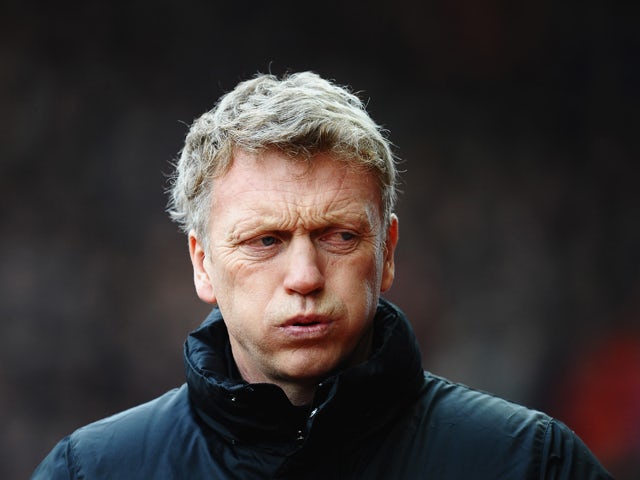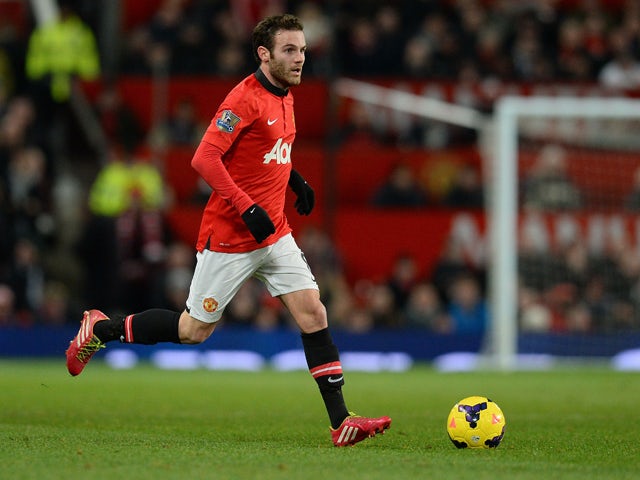Manchester United fans demand two things from their team every time that they take to the pitch. The first is to win and the second is to produce an entertaining brand of football. However, if the latter isn't possible, ensure that the former is achieved.
The 2009 departures of Cristiano Ronaldo and Carlos Tevez, coupled with the chronic knee injuries suffered by Owen Hargreaves, may have hampered the style in which Sir Alex Ferguson's United played up until his retirement last summer, yet two Premier League titles, one League Cup and a Champions League final appearance would suggest that more often than not, positive results were still being attained.
Today's version of United, under the guidance of David Moyes, is doing neither.
There are those who are quick, quite rightly, to highlight the mitigating circumstances. Moyes has indeed inherited the most inept United midfield in recent memory, while any manager in the world would miss players of the ilk of Robin van Persie and Wayne Rooney for a sustained period. In short, some believe that Moyes has been unlucky, as does the Scot himself, who bemoaned his team's misfortune after their eighth Premier League defeat of the season at Stoke City on Saturday: "I don't know what we have to do to win. I thought we were extremely unlucky. We played well but for their first goal it was an incredible deflection and the second was a worldy." In football, though, is there not a case for making your own luck?
 © Getty Images
© Getty Images
After all, is having just four shots on target against a side that hadn't won in eight previous outings and started the match in the bottom three merely bad luck? Let's not forget, it wasn't the first time that United had surrendered points in similar circumstances.
While the first-half injuries to defenders Jonny Evans and Phil Jones at the Britannia Stadium could perhaps excuse the bad result, there is little justification as to why it would have such an adverse effect in an attacking sense.
There will not be many people who can remember a time when a United side did not contain wingers in a 4-4-2 formation. Indeed, the likes of George Best, Willie Morgan, Steve Coppell, Gordon Hill, Andrei Kanchelskis, Lee Sharpe, David Beckham, Ryan Giggs and Cristiano Ronaldo all terrorised full-backs during their Old Trafford careers. Moyes has acquired a template, but even with the inefficient Ashley Young, Nani and Antonio Valencia as his senior wide options, he has thus far refused to elaborate on that strategy.
Such is Moyes's refusal to tinker with those tactics that against Stoke he started with club-record signing Juan Mata, who has been at his creative best in seasons gone by for Chelsea and Spain in the centre of the pitch, wide out on the right.
As Zlatan Ibrahimovic wrote in his autobiography about his time at Barcelona with Pep Guardiola at the helm: "When you buy me, you are buying a Ferrari. If you drive a Ferrari you put premium fuel in the tank, you drive onto the motorway and you floor the accelerator. Guardiola filled up with diesel and went for a spin in the countryside. If that's what he wanted, he should have bought himself a Fiat from the start." Mata may be too modest to make such a claim, but as the match against Stoke wore on, he might well have thought it.
 © Getty Images
© Getty Images
After the game, Moyes himself revealed his major tactic by saying: "We got to the byline eight or nine times and never found the ball." In total, United sent 32 crosses into the Stoke penalty area, with only five of them finding its intended target. So, against honest, solid and tall centre-backs such as Ryan Shawcross and Marc Wilson, one of Moyes's key instructions to his team was to work the ball down the flank, before hoisting into the Land of the Giants, where more often than not it was cleared to safety. It's been a similar story on numerous occasions this term and, quite frankly, the type of football and predictably that could send a can of Red Bull to sleep.
Incidentally, United's solo goal was scored when Mata drifted inside, before playing in Van Persie to curl the ball beyond the reach of Asmir Begovic. It felt more like top-class footballers using their intuition, though, rather than a tactical masterstroke, largely due to the fact that Mata returned out wide soon after.
So, what is the solution? Far be it for this writer to tell a manager of Moyes's experience how and who to pick in his side. A glance at what some of his peers are doing instead could provide the answer, though. Aside from neighbours Manchester City, few bosses favour the 4-4-2 formation, opting instead for a 4-5-1 lineup which can easily revert to a 4-3-3 or 4-2-3-1. The likes of Chelsea, Arsenal, Bayern Munich, Barcelona and Real Madrid all deploy such an approach.
What's more, the arrival of Mata also means that Moyes now has the talent at his disposal to mimic such a stratagem. Van Persie would lead the line, with Mata, Rooney and 18-year-old Adnan Januzaj loading the bullets for the Dutch frontman to fire. Behind that, while the options are not those of Roy Keane or Paul Scholes's quality, perhaps Michael Carrick and Marouane Fellaini could be the holding midfield duo.
A change from the United norm may seem drastic with an uncertain conclusion, but having been defeated in 10 games in all competitions since August and with his team seven points adrift of fourth place, what does Moyes have to lose?









